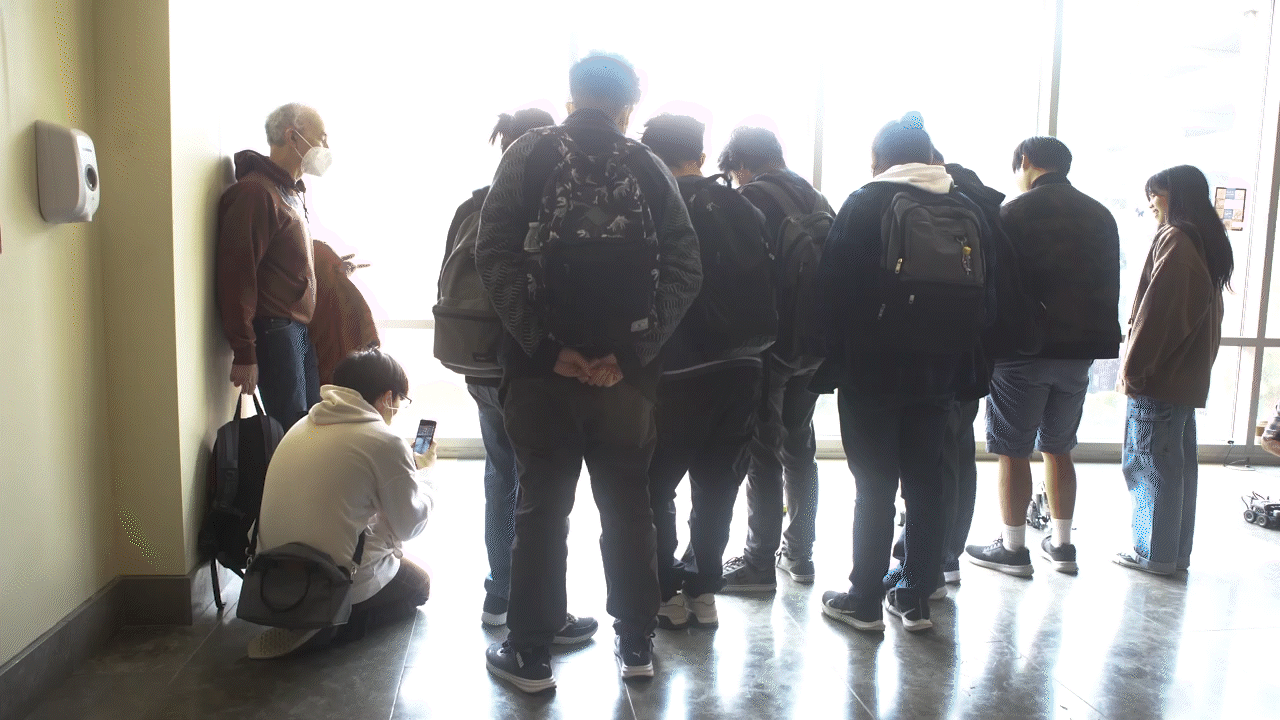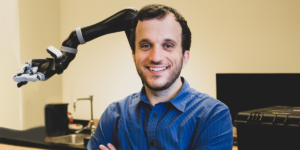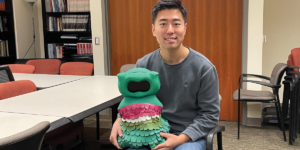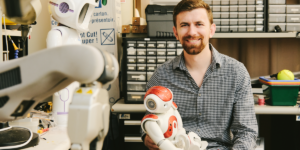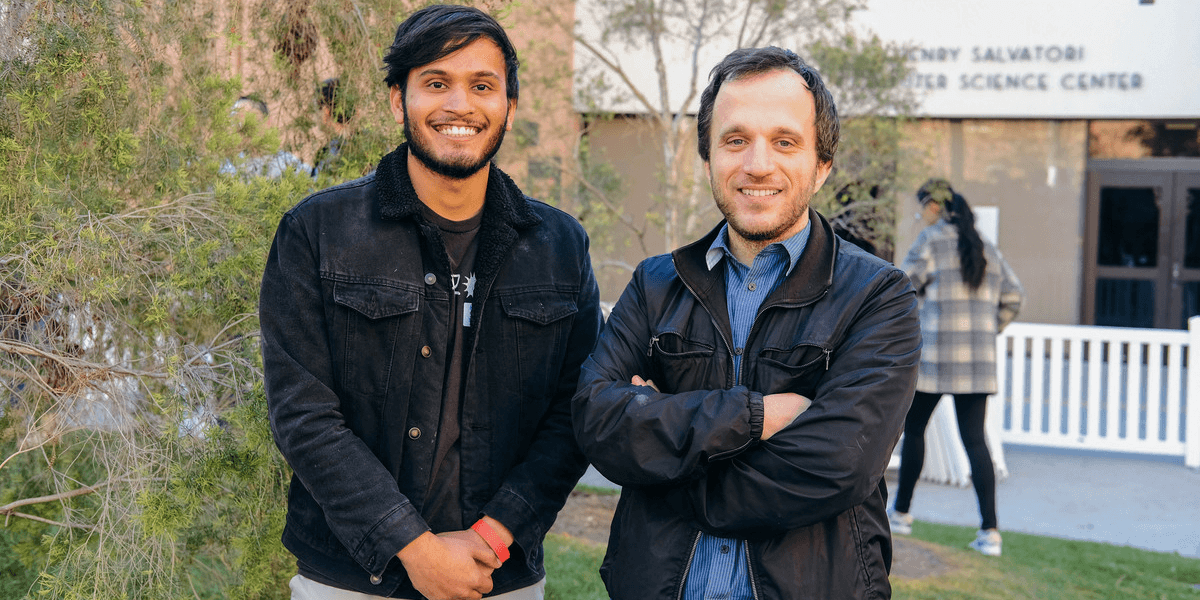
USC Viterbi computer science PhD student Heramb Nemlekar (left) and Assistant Professor Stefanos Nikolaidis aim to teach robots how to predict human preferences in assembly tasks. Photo/Keith Wang.
Humans have a way of understandings others’ goals, desires and beliefs, a crucial skill that allows us to anticipate people’s actions. Taking bread out of the toaster? You’ll need a plate. Sweeping up leaves? I’ll grab the green trash can.
This skill, often referred to as “theory of mind,” comes easily to us as humans, but is still challenging for robots. But, if robots are to become truly collaborative helpers in manufacturing and in everyday life, they need to learn the same abilities.
In a new paper, a best paper award finalist at the ACM/IEEE International Conference on Human-Robot Interaction (HRI), USC Viterbi computer science researchers aim to teach robots how to predict human preferences in assembly tasks, so they can one day help out on everything from building a satellite to setting a table.
“When working with people, a robot needs to constantly guess what the person will do next,” said lead author Heramb Nemlekar, a USC computer science PhD student working under the supervision of Stefanos Nikolaidis, an assistant professor of computer science. “For example, if the robot thinks the person will need a screwdriver to assemble the next part, it can get the screwdriver ahead of time so that the person does not have to wait. This way the robot can help people finish the assembly much faster.”
But, as anyone who has co-built furniture with a partner can attest, predicting what a person will do next is difficult: different people prefer to build the same product in different ways. While some people want to start with the most difficult parts to get them over with, others may want to start with the easiest parts to save energy.
Making predictions
Most of the current techniques require people to show the robot how they would like to perform the assembly, but this takes time and effort and can defeat the purpose, said Nemlekar. “Imagine having to assemble an entire airplane just to teach the robot your preferences,” he said.
In this new study, however, the researchers found similarities in how an individual will assemble different products. For instance, if you start with the hardest part when building an Ikea sofa, you are likely to use the same tact when putting together a baby’s crib.
So, instead of “showing” the robot their preferences in a complex task, they created a small assembly task (called a “canonical” task) that people can easily and quickly perform. In this case, putting together parts of a simple model airplane, such as the wings, tail and propeller.
The robot “watched” the human complete the task using a camera placed directly above the assembly area, looking down. To detect the parts operated by the human, the system used AprilTags, similar to QR codes, attached to the parts.
Then, the system used machine learning to learn a person’s preference based on their sequence of actions in the canonical task.
“Based on how a person performs the small assembly, the robot predicts what that person will do in the larger assembly,” said Nemlekar. “For example, if the robot sees that a person likes to start the small assembly with the easiest part, it will predict that they will start with the easiest part in the large assembly as well.”
Building trust
In the researchers’ user study, their system was able to predict the actions that humans will take with around 82% accuracy.
“We hope that our research can make it easier for people to show robots what they prefer,” said Nemlekar. “By helping each person in their preferred way, robots can reduce their work, save time and even build trust with them.”
For instance, imagine you’re assembling a piece of furniture at home, but you’re not particularly handy and struggle with the task. A robot that has been trained to predict your preferences could provide you with the necessary tools and parts ahead of time, making the assembly process easier.
This technology could also be useful in industrial settings where workers are tasked with assembling products on a mass scale, saving time and reducing the risk of injury or accidents. Additionally, it could help persons with disabilities or limited mobility to more easily assemble products and maintain independence.
Quickly learning preferences
The goal is not to replace humans on the factory floor, say the researchers. Instead, they hope this research will lead to significant improvements in the safety and productivity of assembly workers in human-robot hybrid factories. “Robots can perform the non-value-added or ergonomically challenging tasks that are currently being performed by workers.
As for the next steps, the researchers plan to develop a method to automatically design canonical tasks for different types of assembly task. They also aim to evaluate the benefit of learning human preferences from short tasks and predicting their actions in a complex task in different contexts, for instance, personal assistance in homes.
“While we observed that human preferences transfer from canonical to actual tasks in assembly manufacturing, I expect similar findings in other applications as well,” said Nikolaidis. “A robot that can quickly learn our preferences can help us prepare a meal, rearrange furniture or do house repairs, having a significant impact in our daily lives.”
Published on April 3rd, 2023
Last updated on April 10th, 2023




